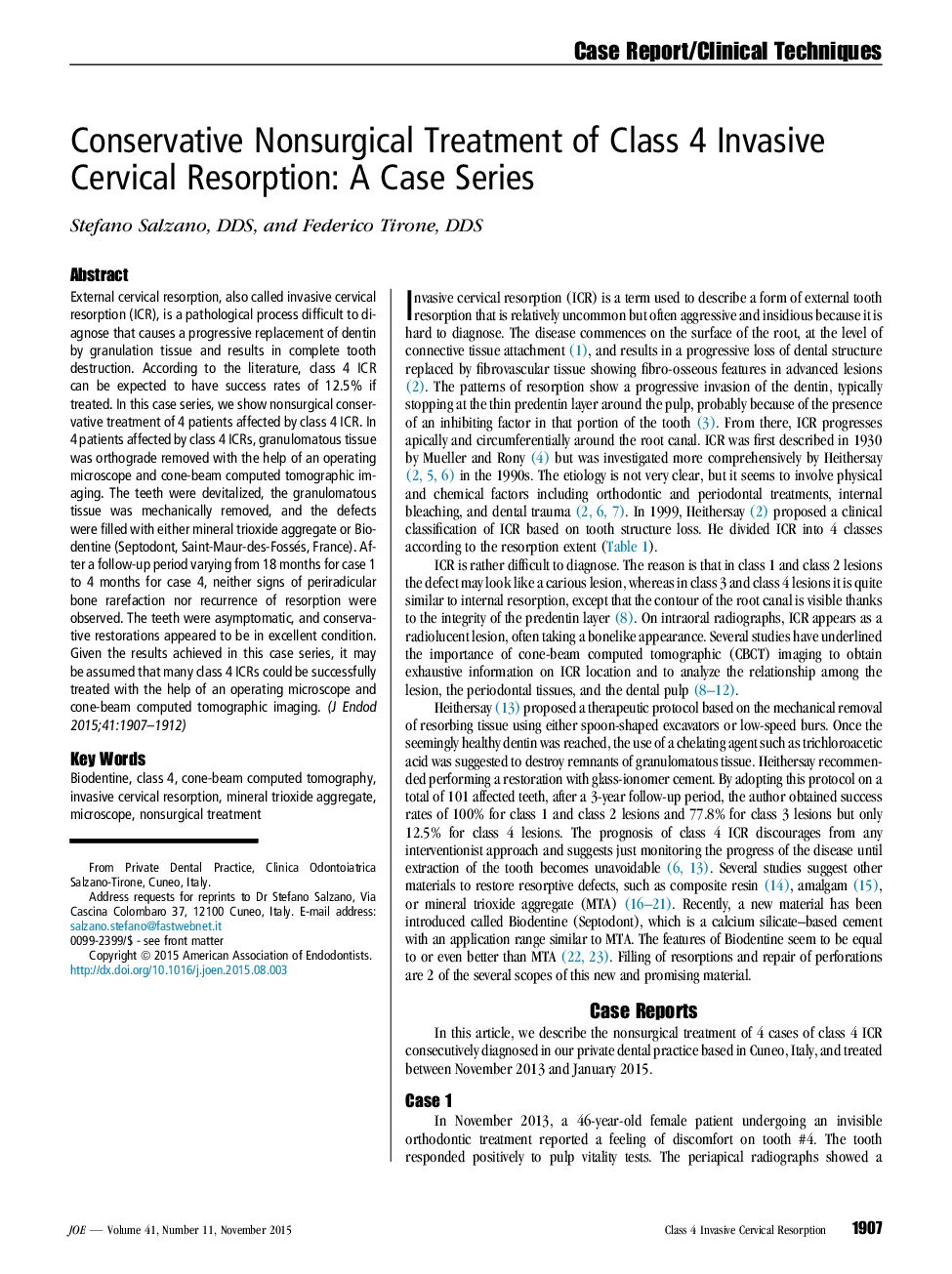| Article ID | Journal | Published Year | Pages | File Type |
|---|---|---|---|---|
| 3146568 | Journal of Endodontics | 2015 | 6 Pages |
External cervical resorption, also called invasive cervical resorption (ICR), is a pathological process difficult to diagnose that causes a progressive replacement of dentin by granulation tissue and results in complete tooth destruction. According to the literature, class 4 ICR can be expected to have success rates of 12.5% if treated. In this case series, we show nonsurgical conservative treatment of 4 patients affected by class 4 ICR. In 4 patients affected by class 4 ICRs, granulomatous tissue was orthograde removed with the help of an operating microscope and cone-beam computed tomographic imaging. The teeth were devitalized, the granulomatous tissue was mechanically removed, and the defects were filled with either mineral trioxide aggregate or Biodentine (Septodont, Saint-Maur-des-Fossés, France). After a follow-up period varying from 18 months for case 1 to 4 months for case 4, neither signs of periradicular bone rarefaction nor recurrence of resorption were observed. The teeth were asymptomatic, and conservative restorations appeared to be in excellent condition. Given the results achieved in this case series, it may be assumed that many class 4 ICRs could be successfully treated with the help of an operating microscope and cone-beam computed tomographic imaging.
